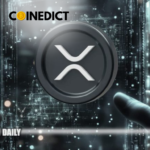The future of decentralized finance (DeFi) is being reshaped by artificial intelligence, paving the way for a new era known as DeFAI—AI-powered decentralized finance. This emerging sector is set to revolutionize on-chain trading and asset management, with autonomous AI-driven agents executing trades, optimizing yields, and seamlessly moving liquidity across multiple blockchains. However, for this vision to become a reality, one major challenge still needs to be addressed: secure and efficient cross-chain interoperability.
Why Cross-Chain Interoperability is Essential for DeFAI
DeFAI operates on multiple blockchains, but its effectiveness depends on how well assets can move between them. Without strong interoperability, AI-powered trading systems will struggle to maximize returns, as liquidity gets stuck in isolated ecosystems.
A well-built cross-chain infrastructure would allow AI systems to:
- Spot and act on price differences across multiple blockchains for arbitrage opportunities.
- Optimize returns by reallocating funds to platforms offering the best yields in real time.
- Improve trading efficiency, reducing delays, slippage, and transaction costs.
In essence, smooth asset movement is the backbone of DeFAI’s ability to function effectively. Without it, AI-driven finance will remain limited to single-chain ecosystems, restricting growth and innovation.
The Risks of Poor Cross-Chain Infrastructure
Without secure and seamless interoperability, DeFAI faces several roadblocks:
- Liquidity Fragmentation: If funds remain trapped on separate blockchains, AI agents won’t have the flexibility to move capital where it’s needed most.
- Security Vulnerabilities: Historically, cross-chain bridges have been prime targets for hacks, leading to billions in losses. A single breach could erode trust in AI-powered finance.
- Operational Inefficiencies: High transaction fees, network congestion, and execution delays can make automated trading significantly less effective.
AI-powered DeFi thrives on speed and precision, but without reliable cross-chain functionality, it could struggle to deliver the benefits it promises.
Building a More Secure and Scalable Cross-Chain Future
For DeFAI to reach its full potential, the industry must focus on developing robust, decentralized, and secure cross-chain solutions.
Key priorities include:
- Developing decentralized, trust-minimized bridges to reduce security risks.
- Ensuring low-cost, high-speed transactions to keep AI agents competitive.
- Creating redundancy in cross-chain pathways to prevent bottlenecks and system failures.
- Expanding interoperability beyond major blockchains to include emerging networks for better yield opportunities.
By standardizing cross-chain communication, DeFi can scale in a way that ensures safety, efficiency, and long-term sustainability.
Interoperability is Non-Negotiable for DeFAI’s Future
The power of AI-driven DeFi lies in its ability to automate financial markets, making trading faster, smarter, and more efficient. But without cross-chain interoperability, this vision remains incomplete.
For DeFAI to truly transform the crypto space, seamless and secure blockchain connectivity is not an option—it’s a necessity. By investing in stronger cross-chain frameworks, the industry can unlock new opportunities and revolutionize decentralized finance for years to come.










